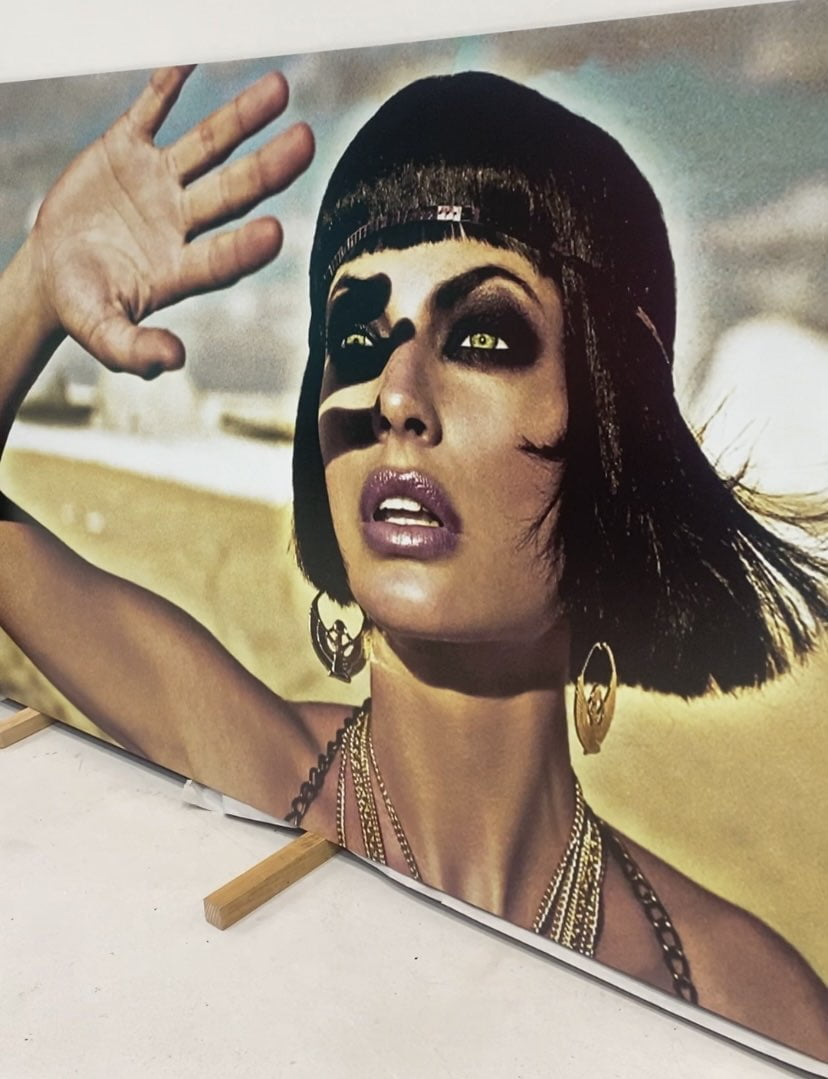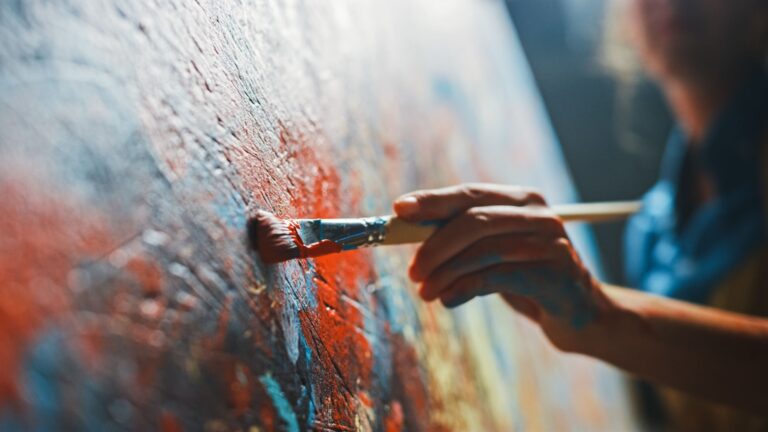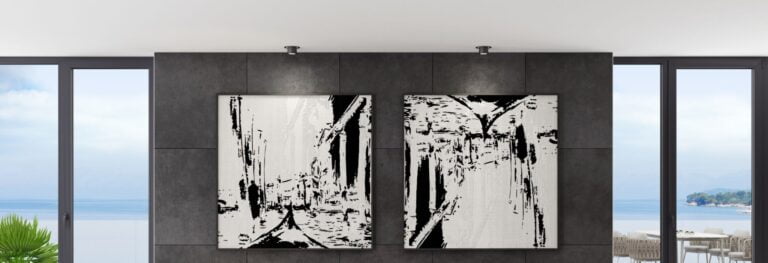Sublimation Printing merges art and technology for stunning, durable prints on various materials. One of the most rapidly expanding trends in the creative industry is Sublimation Printing on Metal. Whether you’re an artist or a business owner looking to offer personalized products, Metal Sublimation Print and other materials is the perfect solution.
Dye sublimation printing enhances pictures with advanced technology, offering customization, fast production, and long-lasting prints. Metal dye-sublimation prints offer four times the color balance and quality compared to photographic paper.
Explore this blog for essential information.
What is Sublimation Printing on Metal?
Sublimation involves converting solid to gas and then solid again, allowing Heat Sublimation. Dye sublimation refers specifically to using dye-based inks in the sublimation process.
Typically, the metal is not very thick. It can be either 0.5mm, 0.7mm, or 1.1mm thick. Applying heat and a special dye creates a durable bond that withstands water, sunlight, and scratches. This process ensures long-lasting color adhesion, resulting in a permanent finish.
Difference between Screen Printing and Sublimation Printing
Sublimation printing involves transferring specialized dyes onto a substrate using heat, producing vibrant and durable colors. It is ideal for fabrics and hard surfaces like metal.
On the other hand, screen printing uses a mesh screen to transfer ink onto paper, plastic, and other materials.
Unique Qualities of Metal as a Substrate
Metal surfaces offer advantages in Sublimation, including smoothness, rigidity, reflective properties, and durability, making them ideal for vibrant, high-definition prints.
Preparing Metal Surfaces for Sublimation Print
Proper preparation of Metal surfaces is crucial for optimal results, avoiding dirt, greasy, and dust issues, and ensuring complete dryness to prevent moisture-related issues.
Recommended Types of Metal
Sublimation printing requires coated metals like aluminum for weightlessness, efficient heat transfer, and long-lasting color. Brass and steel may require extra work for ink sticks.

Best Software and Tools for the Process
Sublimation printing requires the right software and tools to bring your designs to life with precision and quality.
Choosing the best software for Sublimation Prints is crucial for creating stunning prints.
Here are some commonly liked options.
Adobe Photoshop:
This software is suitable for editing and has many tools to improve your designs.
CorelDRAW:
A computer program helps people draw and design things. It’s easy to use and has many tools to create incredible designs. People like using it.
Adobe Illustrator:
This tool makes it easy to create pictures that can be made smaller or larger without getting blurry. This tool lets you make designs with very exact details.
Canva:
Canva is a user-friendly design tool for beginners and sublimation projects, offering various templates and customizable elements.
Essential Tools for Sublimation Printing
These are the essential things required in the process of sublimation. Without them, you can’t proceed.
Sublimation Machine:
A Sublimation Machine is a device that facilitates the process of sublimation printing, where special dyes are heated and applied to thin metal, creating a durable and permanent color bond.
Sublimation Printer:
Invest in a high-quality sublimation printer compatible with sublimation inks and can produce vibrant, detailed prints. There are two popular choices:
What printer to use for Sublimation Printing?
Epson SureColor printers excel in sublimation printing due to professional features and dedicated ink systems, while Epson WorkForce printers designed for general use may not offer the same quality.
Sublimation Inks:
Use specialized sublimation inks formulated to produce vivid, long-lasting colors when heat-activated.
Sublimation Transfer Paper:
Select transfer paper designed for sublimation printing, as it is coated to hold the sublimation ink and release it onto the substrate.
Heat Press Machine:
A heat press machine is used to apply heat and pressure to the sublimation transfer paper, enabling the ink to transfer to the substrate.
Protective Gear:
Wear heat-resistant gloves and use heat-resistant pads or silicone sheets to protect yourself and your work surface during the heat press process.
How does sublimation printing work? Step-by-Step
Sublimation printing uses heat and special dyes to transfer colors onto a substrate, such as fabric or metal. Here’s a simplified explanation of the process of sublimation
- Design Preparation: Create or select a digital image or design to be printed.
- Printing: Use a sublimation printer equipped with ink to print the design onto a special sublimation transfer paper. The ink used in sublimation printing can change from solid to gas without turning into liquid.
- Transfer: Place the printed sublimation transfer paper with the design facing down onto the substrate (e.g., fabric or metal). Use a heat sublimation machine called a heat press to add heat and pressure.
- Sublimation: Heat and pressure cause sublimation ink to transform into gas, permeating the substrate surface due to solid particles bypassing the liquid phase.
- Ink Bonding: Gas solidifies and embeds in the substrate, creating permanent bonds, vibrant colors, and resistance to fading, water, and scratches.
- Finishing: After the transfer process, the substrate is allowed to cool down, and any excess ink or paper residue is removed, leaving behind the final printed product.
Sublimation Printing on Other Materials
Sublimation printing is not limited to metal surfaces; it offers a world of possibilities for printing on various materials. From fabrics to unconventional surfaces, the endless possibilities include acrylic, glass, leather, and synthetic materials.
Sublimation on Fabric:
Sublimation printing on fabric, mainly polyester fabrics, offers vivid, durable prints due to ink bonding with fibers. This allows for creative possibilities in personalized items like dye sublimation, printing t-shirts, and home decor.
Sublimation on Cotton:
While cotton is not inherently compatible with sublimation printing, there are methods to achieve satisfactory results. Cotton can be sublimated using special coatings or transfer papers, allowing for custom designs on the popular fabric.
Dye Sublimation on T-Shirts:
Dye sublimation printing on t-shirts creates unique, eye-catching designs with vibrant colors and intricate details, showcasing creativity and setting it apart from the crowd.

Sublimation Printing on Acrylic:
Acrylic is a popular material for personalized gifts, signage, and home decor, enabling sublimation printing to infuse your designs with vibrant colors for eye-catching, durable prints.
Sublimation Glass Printing:
Sublimation printing on glass surfaces allows for custom designs while maintaining transparency, transforming ordinary objects into stunning works of art. Learn techniques and tips for successful results.
Sublimation Printing on Leather:
Sublimation printing on leather surfaces enhances personalization and uniqueness in accessories like wallets and keychains, requiring careful considerations and techniques.
Sublimation Printing Problems
- Faded or Dull Colors: Check temperature settings, use fresh ink cartridges, and conduct test prints for vibrant results.
- Blurred or Smudged Prints: Ensure proper paper handling, apply sufficient pressure, and follow the recommended transfer time and temperature.
- Uneven or Patchy Transfers: Calibrate your heat-press, secure the substrate evenly, and use heat-resistant tape to prevent inconsistencies.
- Ghosting or Double Images: Secure the substrate in place, invest in a heat press with a locking mechanism, and minimize image shifts.
- Bleeding or Blotchy Colors: Control ink saturation and allow for proper drying time to avoid spreading and messy prints.
Exploring Sublimation Printing Services in Dubai
As a leading interior design company, Artplus offers top-notch Sublimation Printing Services in Dubai. We specialize in providing High-Quality Solutions for various needs.
We Offer:
- Personalized and customized artwork and designs
- Vibrant and long-lasting prints
- Wide range of material options for sublimation printing
- A collaborative approach, working closely with clients
- Integration of sublimation prints with interior design concepts
- Expertise in transforming interior spaces with captivating sublimation prints
Frequently Asked Questions
Sublimation printing is ideal for high-polyester materials for vibrant, long-lasting prints; other materials like ceramic, metal, glass, and specialised coatings provide smooth surfaces.
Heat special transfer paper is the best option for applying graphics to t-shirts, polyester fabric, and other porous surfaces
Final Words:
Ultimately, Sublimation Printing opens creative possibilities for artists, businesses, and individuals seeking vibrant, durable prints on various materials. Whether it’s sublimation printing on metal, fabric, acrylic, or other surfaces, this technique combines artistry and technology to deliver stunning results.
Sublimation printing is famous for creating durable, fade-resistant designs in art, fashion, and promotions with efficient equipment and expertise.
ArtPlus offers reliable sublimation printing services in Dubai, transforming visions into stunning realities!





